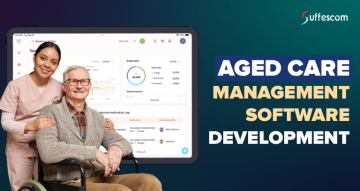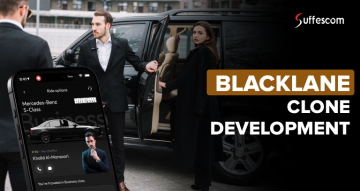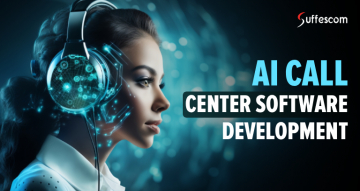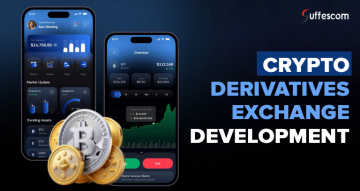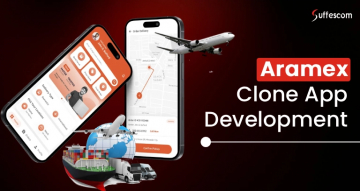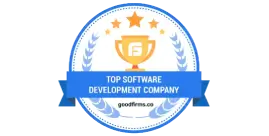Everything You Need to Know About Dark Kitchen App Development

In today’s fast-paced digital world, consumers are increasingly opting for food delivery over dining out. That’s where dark kitchen app development comes into play. These "ghost kitchens" or "cloud kitchens" operate without a dine-in facility, serving food exclusively through online delivery platforms. Backed by AI, automation, and smart logistics, dark kitchen apps are transforming the food service industry into a lean, tech-powered business model.
In this guide, you'll learn how to build a cloud kitchen app, the cost involved, the business models available, key features you need, and how AI is making these platforms smarter and more efficient.
What is a Dark Kitchen and How Does It Work?
A dark kitchen is also known as a ghost kitchen, cloud kitchen, or virtual Kitchen. This type of Kitchen does not have any visible sitting arrangement for the customers. They work on the online food ordering module. Customers can relish their favorite cuisines by ordering either through their own app or by third-party apps. These delivery models operate by receiving orders on their own dark kitchen app and providing a location to pick up their food. The biggest advantage of the dark Kitchen is that it does not spend unwarranted money on dine-in facilities. There are several other perks associated with the virtual kitchen app development; let's have a look at them;
Benefits of Virtual Kitchen App Development
1. Lower Operational Costs
While establishing a traditional restaurant, a lot of things are taken into consideration. First of all, a lavish space needs to be rented out at a serene location. A dine-in restaurant is all about an extraordinary ambiance that costs gigantic money. Further, the money is spent on the tables, chairs, sofas, air conditioners, lighting, etc. Along with this the salary of the employees and staff also comes under the operational costs. But in the case of a virtual Kitchen, the only cost that needs to be paid is for the kitchen setup and that too, specifically the chefs. Hence, the maintenance of the place and offering salaries to the restaurant executives gets removed.
2. Reduced Rents
A cloud kitchen, in comparison to the traditional one, enjoys limited space. This means the larger the area, the more rent is to be paid. In today's day and age, interior design and aura play a pivotal role in enticing the customers. This makes their whole experience fantastic whenever they are having a meal. So, the better the spacing and location of a place, the more money has to be infused in the property. All this gets included in the rent of the restaurant. Therefore, virtual restaurants are the best options to keep the expenses in control.
3. Enhanced flexibility & Efficiency
The cloud kitchens offer amazing flexibility related to food delivery. There is an additional advantage that these restaurants are able to handle more than one brand. The efficiency can be met by preparing everything in advance. It includes the ingredients required, how to prepare different cuisines, and curating various menus and cuisines. Hence the efficiency and flexibility are maintained with the help of utilizing various tools and technologies that assist with logistics and supply chain management.
4. Amplify Sales With Numerous Brands
To excel in the department of sales, one of the key points is to aim at the various fragments of the market. Every detail related to the virtual restaurants is managed by the data. This data is very crucial as it helps in gathering information regarding the customer's requirements. The intricate details involve customer needs at specific locations with multiple brands. For example, a particular dark kitchen can deliver both fast foods as well as healthy food items, therefore, catering to a variety of people. It means that it strikes a startling balance and serves multiple contrasting demographics simultaneously. This is one of the main reasons behind the spike in sales covering various brands.
Before going all out for dark kitchen app development, there are certain issues that need to be tackled.
Launch Your Own Cloud Kitchen App Today
Partner with our expert developers to design a scalable, AI-integrated virtual kitchen platform tailored to your food business goals.
Before You Develop a Cloud Kitchen App: What to Consider
Using AI for Smart Insights
Technology has helped in examining and exploring the market trends and market conditions extensively. The introduction of Artificial Intelligence and Machine Learning has greatly helped in analyzing and identifying the necessary data. Artificial Intelligence helps in decision making, whereas machine learning helps in understanding contemporary things from the data. Hence, by gathering information about top-selling cuisines in the market, one can steer their food delivery app towards success.
Building Customer Trust with Transparency
The biggest hindrance to selecting a cloud kitchen is clarity. Therefore, to build a successful platform, one needs to ensure that the food is prepared from safe & secure provisions. It results in procuring consumers' trust, which will directly lead to an abrupt outpouring of sales.
Step-by-Step Guide to Cloud Kitchen App Development
The process involved in the creation of the Cloud Kitchen application is more or less the same as that of other applications. To start everything from scratch, the following steps need to be followed.
Step 1: Hire a Reliable App Development Partner
There are a lot of food delivery app development companies in the market that are eligible to meet the clients' requirements. Take time to select the best amongst all by hiring the right developer to meet your needs. Once the developer is finalized, go ahead and strike the deal.
Step 2: Select or Customize a Pre-Built App
Many developers offer white-label cloud kitchen apps. Choose one that fits your model or customize it to match your brand and workflow.
Step 3: Add Branding and Custom Features
Ensure the app supports multi-brand management, order scheduling, AI-powered dashboards, and customer loyalty systems.
Step 4: Conduct Rigorous Testing
When an application is built, it is susceptible to get affected by several issues. Therefore, the best approach is to run specific test programs and ensure they are fixed before launch. Testing is conducted to ensure the app provides an exceptional user experience. This stage is vital because it is only after this that the app is supposed to be launched.
Step 5: Launch and Scale
After QA, deploy your app on Android, iOS, and the web. Use analytics to optimize operations and scale with multiple virtual restaurant brands.
Launch Dark Kitchen Food Delivery Application
After fulfilling every aspect, with the app free from bugs and errors, it's time for a grand launch. After successful launching, the app will act as a competitor to the other similar virtual kitchen industry.
Dark Kitchen Business Model
Dark Kitchen may be an unknown term for a large section of people, but the people working in that niche have a clear-cut idea about the same. Categorizing things according to the specifications and modules, there are various types of dark kitchen models. Having a thorough understanding of the different business models, one can have a better perception about launching this cloud restaurant industry.
Traditional Dark Kitchen
As the name suggests, this is an extremely basic form of kitchen module with only a sole virtual kitchen location. It majorly possesses only a single form of cuisine. These forms of typical conventional kitchen models are dependent on third-party delivery mediators for food delivery.
Multi-Brand Dark Kitchen
The cloud restaurant brands have a multitude of brands under a single conglomerate. The biggest advantage of such a business model is that they are ready to provide a variety of cuisines and dishes to people while utilizing the same space and kitchen related appliances and tools. It serves the purpose in a way that the operational costs are lowered, and the productivity is maintained at all times with proper planning and regulation.
Takeaway Dark Kitchen
This form of business model allows the customers to wait for their turn and collect their orders. Here, the person can choose their favorite dish online from the menu. Then the restaurants are liable to prepare the meals as directed and pack them. The customer is then informed about the timing of their meals, as to how much time it will take to get ready. According to that time estimation, the individual can visit the place and grab their order.
Aggregator-Based Dark Kitchen
According to this model, the largest food delivery companies, such as Uber Eats, DoorDash, and Grubhub, rent out lavish spaces for food delivery service providers. The capacity of these rented rooms is impressive and completely modular, fully equipped with advanced technology. The owner of the Kitchen is responsible for all the caretaking, while food delivery brands can concentrate on cooking fantastic meals to serve their customers the best.
Dark Kitchen Plus Model
It is conventionally the same as the above business model with a little bit more to offer. This is actually the extension of the aggregator-based dark Kitchen. Here, the aggregators enhance every bit of the virtual Kitchen by offering better infrastructure and enhancing the kitchen designs, adjustments, delivery as well as installation. The optimization also results in making a storefront to give it a takeaway model look.
Outsourced Dark Kitchen
Now, this type of kitchen model is slightly different from the above ones. Here, the main focus is on serving or delivering the food. The meals are cooked from somewhere else, and they have to give finishing touches to the dishes. Such types of kitchens can literally supply any form of food from outside. This is generally a customer-facing sort of module where more emphasis is laid on carrying out and delivering a perfect meal to its customers.
Subscription-Based Food Delivery Model
A subscription-based food delivery app for a dark kitchen model offers customers regular meal plans, ensuring consistent orders, optimized operations, reduced waste, and steady revenue with minimal overhead and no dine-in.
Food Waste Management Feature
A trending feature in cloud kitchen apps is AI-powered food waste management. These systems utilize real-time inventory tracking and predictive analytics to monitor ingredient usage, forecast demand, and suggest recipes based on surplus items to minimize food wastage.
Transform Your Restaurant with a Custom Dark Kitchen App
We specialize in building powerful, user-friendly dark kitchen apps with AI features, subscription models, and zero-waste optimization.
Dark Kitchens App Development Cost
Dark Kitchen is a very new and broad concept. There is very limited knowledge of this notion amongst people. Additionally, several factors must be taken into account when discussing the cost of cloud kitchen app development.
Dark kitchens app cost starts from $10000, depending on the level of customization and app complexity. Check out the following factors, which are responsible for influencing the cost;
- Latest tech stacks
- Integrated features
- App complexity
- Location of the developers
- UI/UX design
- Size of the development firm
- Development process
Final words!
The dark kitchen model is not just a trend—it's the future of the food industry. With rapid urbanization, changing lifestyles, and the rise of food delivery, ghost kitchens offer an agile, scalable, and cost-efficient solution. Backed by a powerful, feature-rich app, your cloud kitchen can thrive in the competitive 2025 food-tech market.
If you're ready to build your dark kitchen empire, start with the right technology.
FAQs
1. What is a dark kitchen or ghost kitchen?
A dark kitchen (or ghost/cloud kitchen) is a food service business that operates without a dine-in facility, focusing solely on online food delivery through apps.
2. How much does it cost to build a dark kitchen app?
The cost starts from $10,000 and may increase based on app complexity, features, and location of the development team.
3. Which features should a dark kitchen app include?
Must-have features include order tracking, AI-based demand forecasting, food waste management, subscription plans, real-time inventory, and customer analytics.
4. Can one app manage multiple food brands?
Yes, multi-brand dark kitchen models are supported in custom apps, enabling multiple cuisines or brand identities in one backend system.
5. How long does it take to develop a cloud kitchen app?
Typically, it takes 4–8 weeks, depending on the app’s scope, required integrations, and customizations.
6. How does AI improve dark kitchen operations?
AI helps optimize supply chains, predict order trends, personalize recommendations, and minimize food waste with smart analytics.
